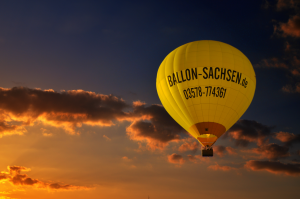- This topic is empty.
-
AuthorPosts
-
13/06/2025 at 11:11 #8002
In an era where energy conservation is paramount, understanding which fan uses the least electricity is crucial for both environmental sustainability and cost savings. Fans are ubiquitous in homes and workplaces, serving various purposes from cooling to ventilation. However, not all fans are created equal when it comes to energy consumption. This post aims to dissect the factors influencing fan efficiency, explore different types of fans, and provide practical tips for selecting the most energy-efficient option.
Understanding Fan Efficiency
Fan efficiency is typically measured in terms of airflow (CFM – cubic feet per minute) per watt of electricity consumed. The higher the CFM per watt, the more efficient the fan is. When evaluating fans, it’s essential to consider not just the wattage but also the airflow they generate. This ratio is crucial for determining the overall energy efficiency of a fan.
Types of Fans and Their Energy Consumption
1. Ceiling Fans: Ceiling fans are a popular choice for cooling large spaces. They generally consume between 50 to 100 watts, depending on their size and motor type. Energy-efficient models, particularly those with DC motors, can use as little as 30 watts while providing adequate airflow. Look for fans with the Energy Star label, which indicates they meet strict energy efficiency guidelines.
2. Table and Floor Fans: These portable fans are versatile and can be used in various settings. Most table and floor fans consume between 30 to 100 watts. However, models with brushless motors tend to be more efficient, often using less than 50 watts while delivering substantial airflow.
3. Exhaust Fans: Commonly used in kitchens and bathrooms, exhaust fans help remove moisture and odors. They typically consume between 20 to 80 watts. Selecting a fan with a variable speed setting can enhance efficiency, allowing you to use less power when full capacity isn’t necessary.
4. Bladeless Fans: These modern designs are not only aesthetically pleasing but also energy-efficient. Bladeless fans can use around 40 to 60 watts, depending on the model. They operate quietly and provide a smooth airflow, making them a popular choice for residential and office spaces.
Factors Influencing Fan Efficiency
– Motor Type: The type of motor significantly impacts energy consumption. DC motors are generally more efficient than traditional AC motors, consuming up to 70% less energy while providing the same airflow.
– Fan Size: Larger fans can move more air at lower speeds, which can lead to lower energy consumption. However, it’s essential to match the fan size to the room size for optimal efficiency.
– Speed Settings: Fans with multiple speed settings allow users to adjust airflow according to their needs. Utilizing lower speeds can significantly reduce energy consumption.
– Blade Design: The design and angle of the blades can affect airflow efficiency. Fans with aerodynamically designed blades can move more air with less energy.
Practical Tips for Choosing an Energy-Efficient Fan
1. Look for Energy Star Ratings: Fans that are Energy Star certified meet strict energy efficiency guidelines set by the U.S. Environmental Protection Agency. These fans are designed to use less energy without sacrificing performance.
2. Consider Smart Features: Some modern fans come equipped with smart technology that allows for remote control and scheduling. These features can help optimize usage patterns, reducing unnecessary energy consumption.
3. Regular Maintenance: Keeping fans clean and well-maintained can improve their efficiency. Dust and debris can hinder performance, leading to increased energy usage.
4. Use Fans Wisely: Fans are most effective when used in conjunction with other cooling methods, such as air conditioning. Utilizing fans to circulate cool air can allow you to set your thermostat a few degrees higher, saving energy.
Conclusion
Choosing the right fan involves more than just considering its initial cost; it requires an understanding of its energy consumption and efficiency. By focusing on the type of fan, motor efficiency, and smart features, consumers can make informed decisions that not only save money on electricity bills but also contribute to a more sustainable future. In the quest for the fan that uses the least electricity, knowledge is power, and making the right choice can lead to significant long-term benefits.
-
AuthorPosts
- You must be logged in to reply to this topic.



